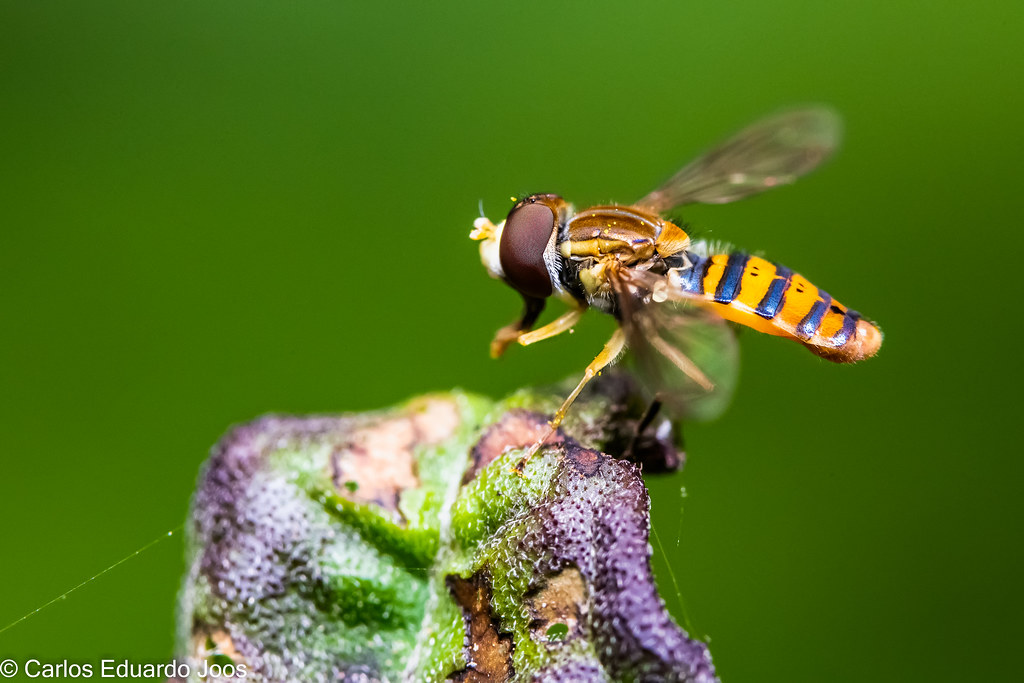In the hidden world of your kitchen garden, an epic battle unfolds every single day that most gardeners never notice. While you’re tending to your tomatoes and checking your carrots, microscopic warriors are engaged in a life-or-death struggle that determines whether your plants will thrive or succumb to one of nature’s most persistent pests. These tiny heroes don’t wear capes or carry weapons, but they possess something far more deadly – an insatiable appetite for destruction that makes them the ultimate biological weapon against garden invaders.
The Invisible Army in Your Backyard
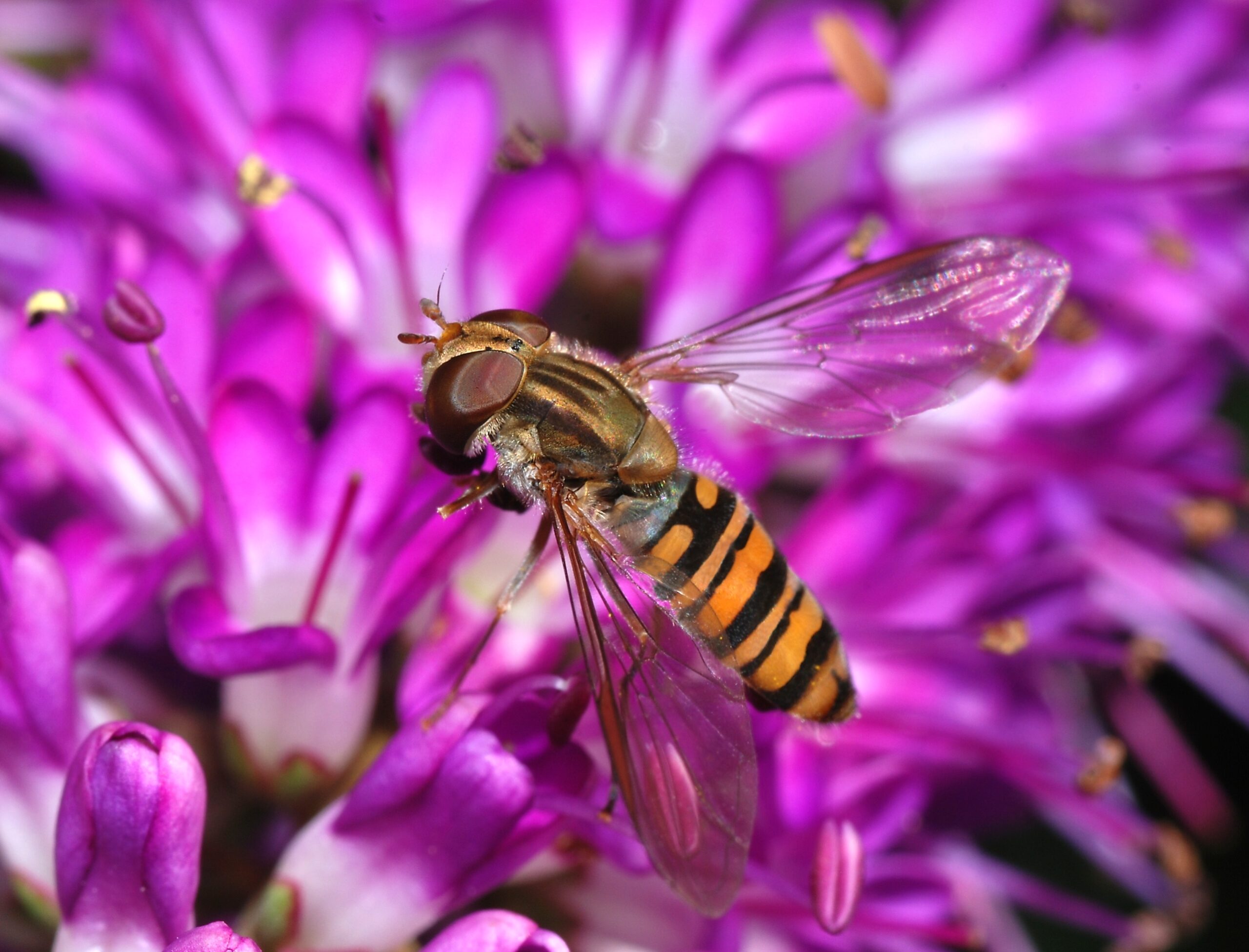
Hoverflies, also known as flower flies or syrphid flies, represent one of nature’s most efficient pest control systems operating right under your nose. These remarkable insects belong to the family Syrphidae and comprise over 6,000 species worldwide, making them one of the most diverse and successful insect families on Earth. What makes them truly extraordinary isn’t just their sheer numbers, but their incredible ability to mimic more dangerous insects like wasps and bees.
Most gardeners walk past these unassuming creatures without realizing they’re witnessing nature’s most effective aphid elimination squad in action. The adult hoverflies hover gracefully above flowers, their wings beating so rapidly they create the characteristic humming sound that gives them their name. But it’s their larvae – the real aphid assassins – that deserve our attention and respect.
The Aphid Apocalypse: Understanding the Enemy
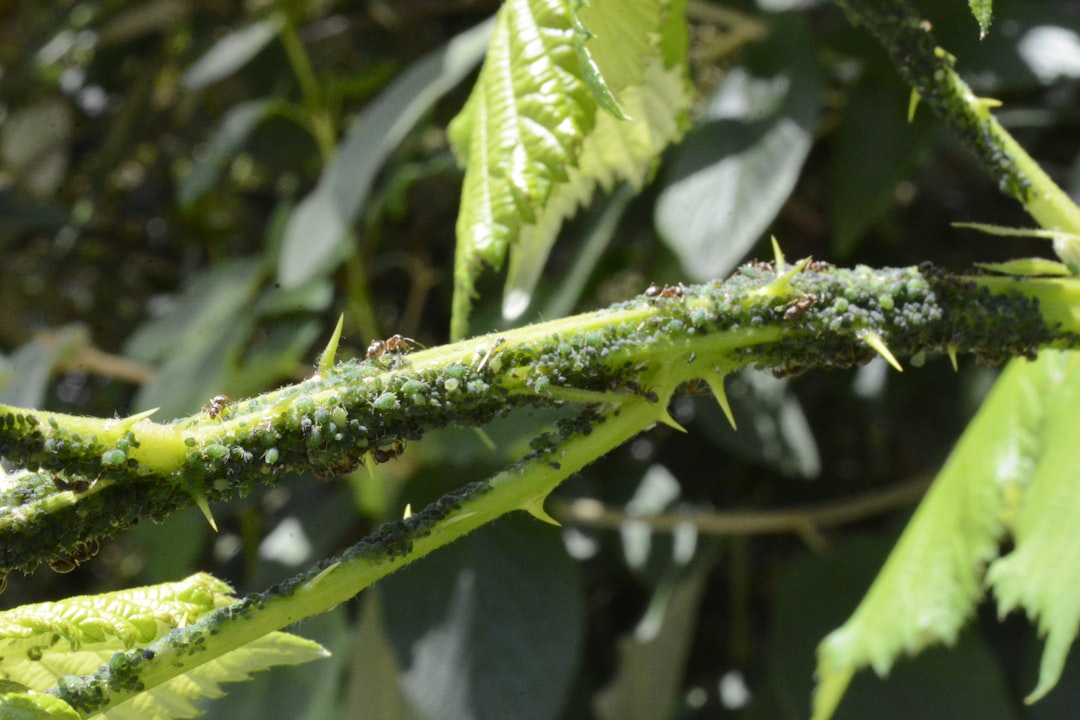
Before we can appreciate the hoverfly’s remarkable hunting prowess, we need to understand exactly what makes aphids such formidable garden pests. These tiny, soft-bodied insects multiply at an alarming rate, with a single female capable of producing up to 80 offspring without mating through a process called parthenogenesis. Within just two weeks, these newborns can begin reproducing themselves, creating an exponential population explosion that can devastate entire crops.
Aphids feed by piercing plant tissues with their needle-like mouthparts and sucking out the nutrient-rich sap that plants depend on for survival. As they feed, they excrete a sticky substance called honeydew, which attracts ants and promotes the growth of sooty mold fungi. This double assault weakens plants, stunts growth, and can lead to the transmission of deadly plant viruses.
The sheer scale of aphid reproduction is mind-boggling – under ideal conditions, a single aphid can theoretically produce over 600 billion descendants in a single growing season. This is where hoverflies step in as nature’s population control specialists.
Meet the Hoverfly: Master of Disguise
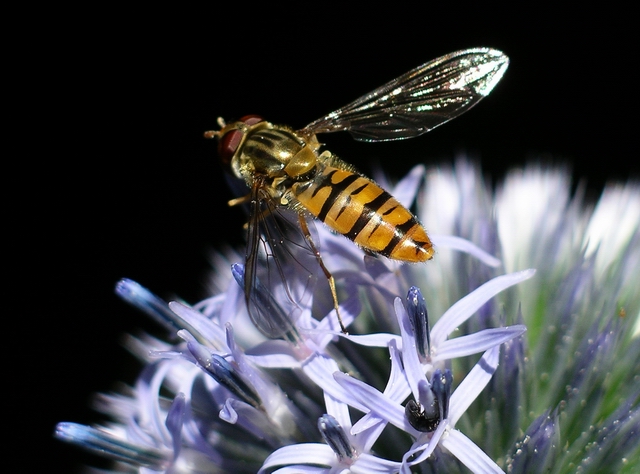
Hoverflies have evolved one of the most sophisticated disguise systems in the insect world, perfectly mimicking the appearance of stinging insects to protect themselves from predators. Their yellow and black striped bodies closely resemble wasps, while some species sport the fuzzy appearance of bees. This evolutionary masterpiece, known as Batesian mimicry, allows these harmless flies to move freely through gardens without becoming someone else’s lunch.
The most common hoverfly species in kitchen gardens include the marmalade hoverfly (Episyrphus balteatus) with its distinctive double yellow stripes, and the thick-legged hoverfly (Syritta pipiens) with its swollen hind legs. These species are particularly effective at controlling aphid populations because they actively seek out aphid colonies to lay their eggs.
Adult hoverflies are excellent pollinators, visiting flowers to feed on nectar and pollen while inadvertently transferring pollen between plants. This dual role as both pollinator and pest controller makes them invaluable garden allies that deserve our protection and encouragement.
The Larval Killing Machine
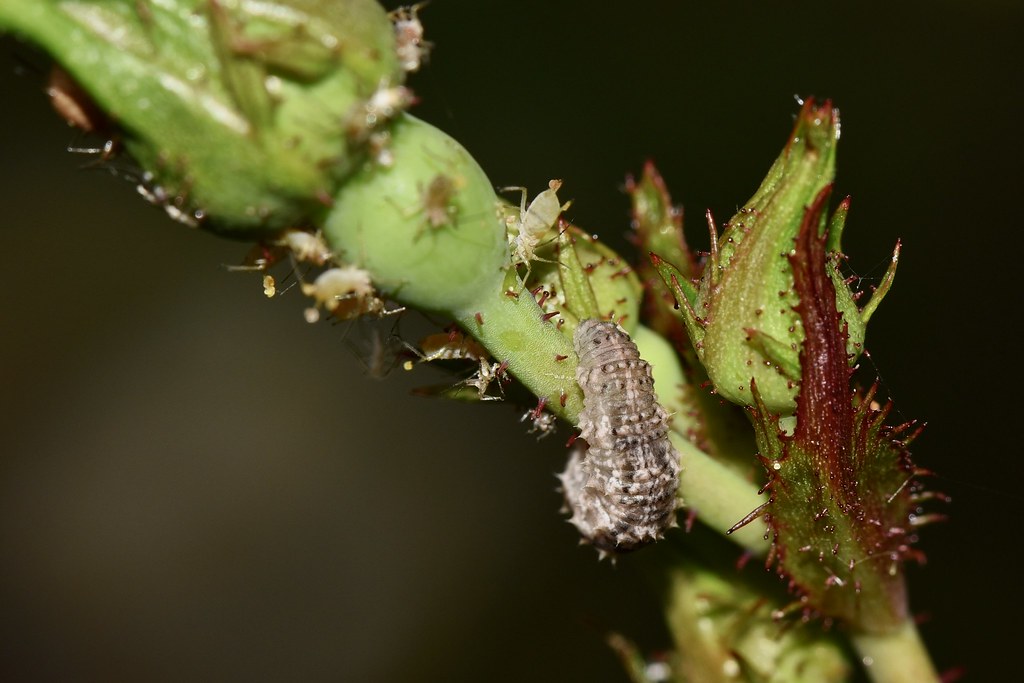
While adult hoverflies are busy pollinating flowers and looking pretty, their larvae are engaged in a ruthless campaign of aphid extermination that would make any horror movie director proud. Hoverfly larvae are legless, maggot-like creatures that look nothing like their colorful parents, but what they lack in beauty, they make up for in sheer killing efficiency.
A single hoverfly larva can consume between 400 to 700 aphids during its development period, which typically lasts two to three weeks. Some exceptionally voracious species can devour up to 1,000 aphids before pupating. These numbers aren’t just impressive statistics – they represent a biological pest control system that operates 24 hours a day, seven days a week, without any input from gardeners.
The larva’s hunting technique is both fascinating and terrifying. Using their pointed head capsule, they pierce aphid bodies and literally suck out their internal fluids, leaving behind empty husks. They move systematically through aphid colonies, leaving a trail of destruction that can clear an entire infestation in just days.
The Hunt Begins: Egg-Laying Strategy
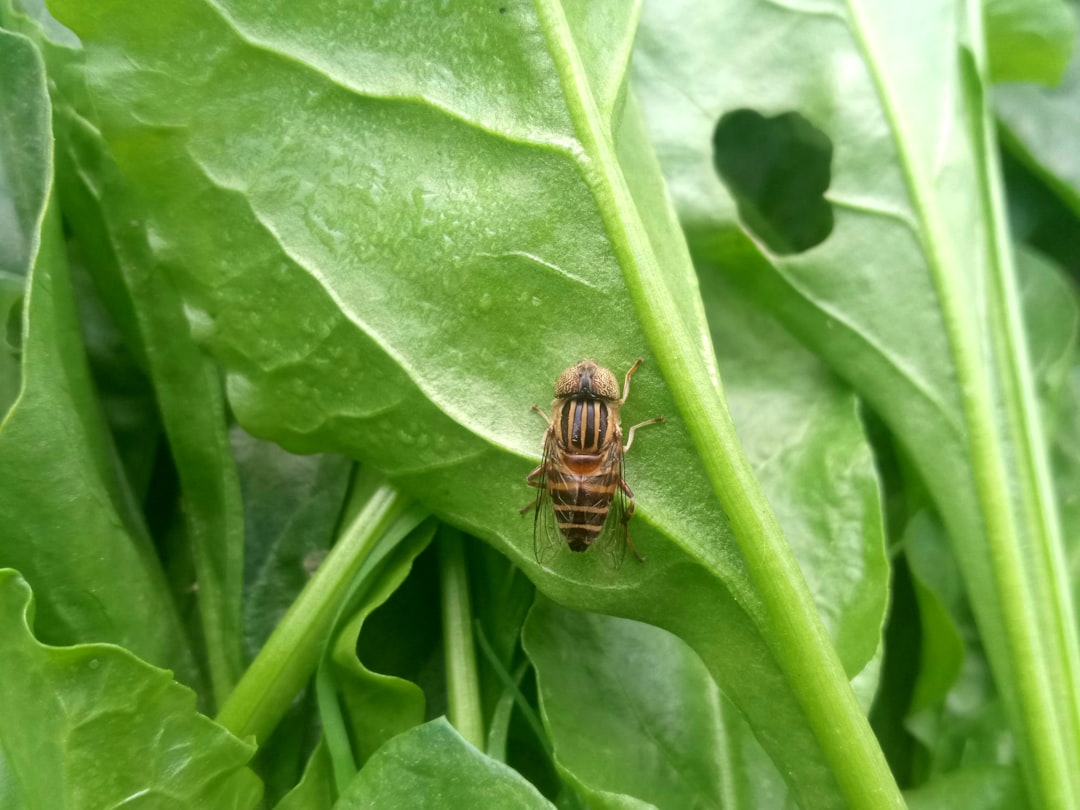
The hoverfly’s success as an aphid predator begins with the female’s remarkable ability to locate and assess aphid colonies with surgical precision. Female hoverflies possess incredibly sensitive chemical receptors that can detect the alarm pheromones released by aphids under stress. This biological radar system allows them to home in on aphid colonies from considerable distances.
Once a suitable colony is located, the female hoverfly conducts a thorough reconnaissance mission, hovering above the infestation to assess its size and density. She’s looking for colonies that are large enough to sustain her offspring but not so overcrowded that competition will be fierce. This careful evaluation process ensures maximum survival rates for her larvae.
The egg-laying process itself is a marvel of biological engineering. The female deposits her elongated, white eggs directly among or very close to aphid colonies, typically on the undersides of leaves. She can lay between 100 to 400 eggs over her lifetime, strategically placing them where her larvae will have immediate access to food upon hatching.
From Egg to Assassin: The Larval Development
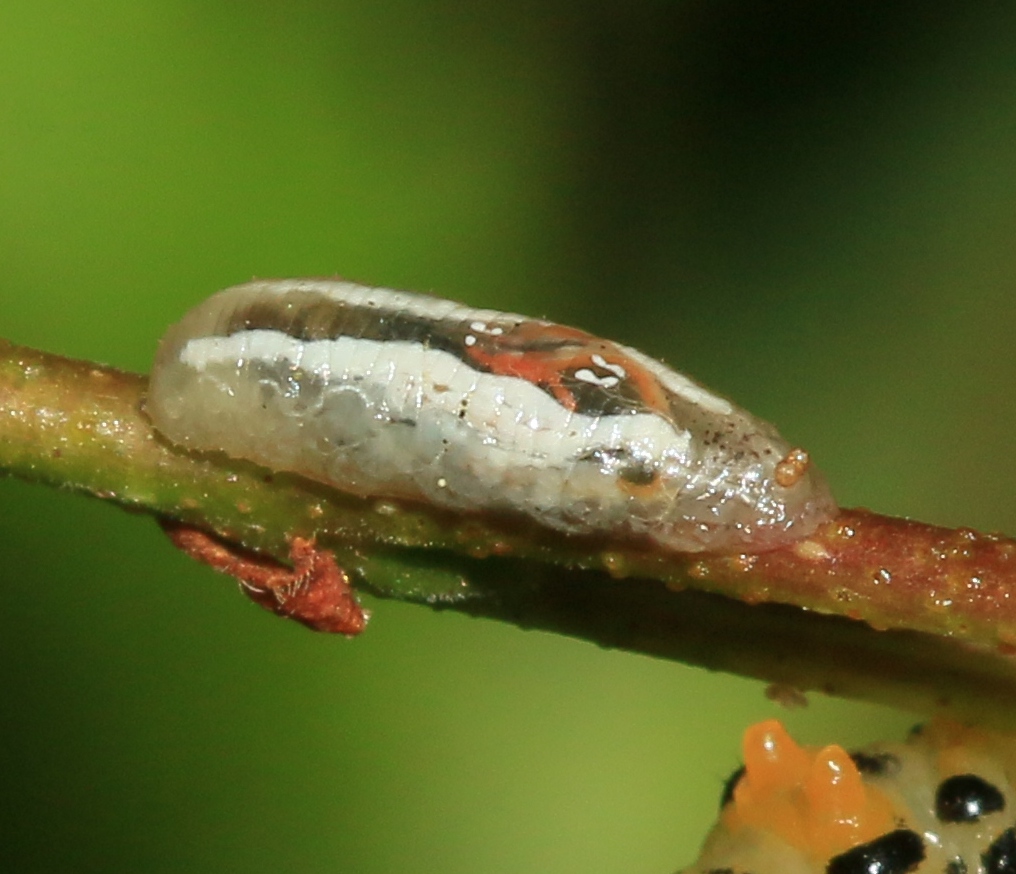
The transformation from egg to killing machine happens with remarkable speed and efficiency. Hoverfly eggs hatch within 2-4 days, depending on temperature and humidity conditions. The emerging larvae are immediately ready for battle, equipped with everything they need to begin their aphid-hunting career.
Newly hatched larvae are translucent and barely visible to the naked eye, but they possess an incredible sense of smell that allows them to locate aphids with pinpoint accuracy. They begin feeding immediately, growing rapidly as they consume their prey. The larval stage consists of three distinct phases, called instars, each marked by molting as the growing larva outgrows its skin.
During the first instar, larvae are small and vulnerable, focusing on smaller aphids and aphid nymphs. As they grow and molt into their second and third instars, they become increasingly bold and capable of tackling larger prey. Third-instar larvae are particularly devastating, capable of consuming dozens of aphids per day.
The Feeding Frenzy: How Larvae Consume Their Prey
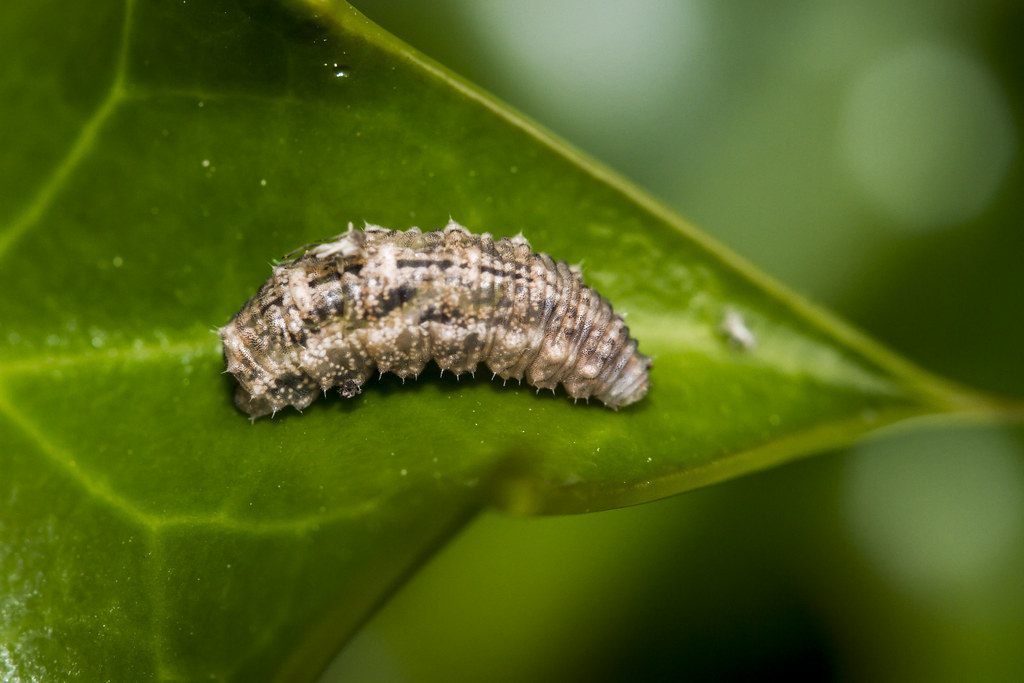
The feeding behavior of hoverfly larvae is both methodical and brutal, resembling a perfectly choreographed dance of destruction. When a larva encounters an aphid, it uses its pointed head to pierce the aphid’s soft body wall, then injects digestive enzymes that begin breaking down the aphid’s internal tissues. This process, called external digestion, allows the larva to literally drink its prey from the inside out.
The speed at which larvae can process aphids is astounding. A hungry third-instar larva can consume an aphid every few minutes, working its way through dense colonies with mechanical efficiency. They show no mercy to any life stage of aphids, devouring eggs, nymphs, and adults with equal enthusiasm.
What makes this feeding strategy particularly effective is the larva’s ability to continue hunting even when full. Unlike many predators that stop feeding when satiated, hoverfly larvae will continue killing aphids and storing them for later consumption. This behavior, known as surplus killing, ensures that aphid populations are decimated even when food is abundant.
Chemical Warfare: The Biochemical Arsenal
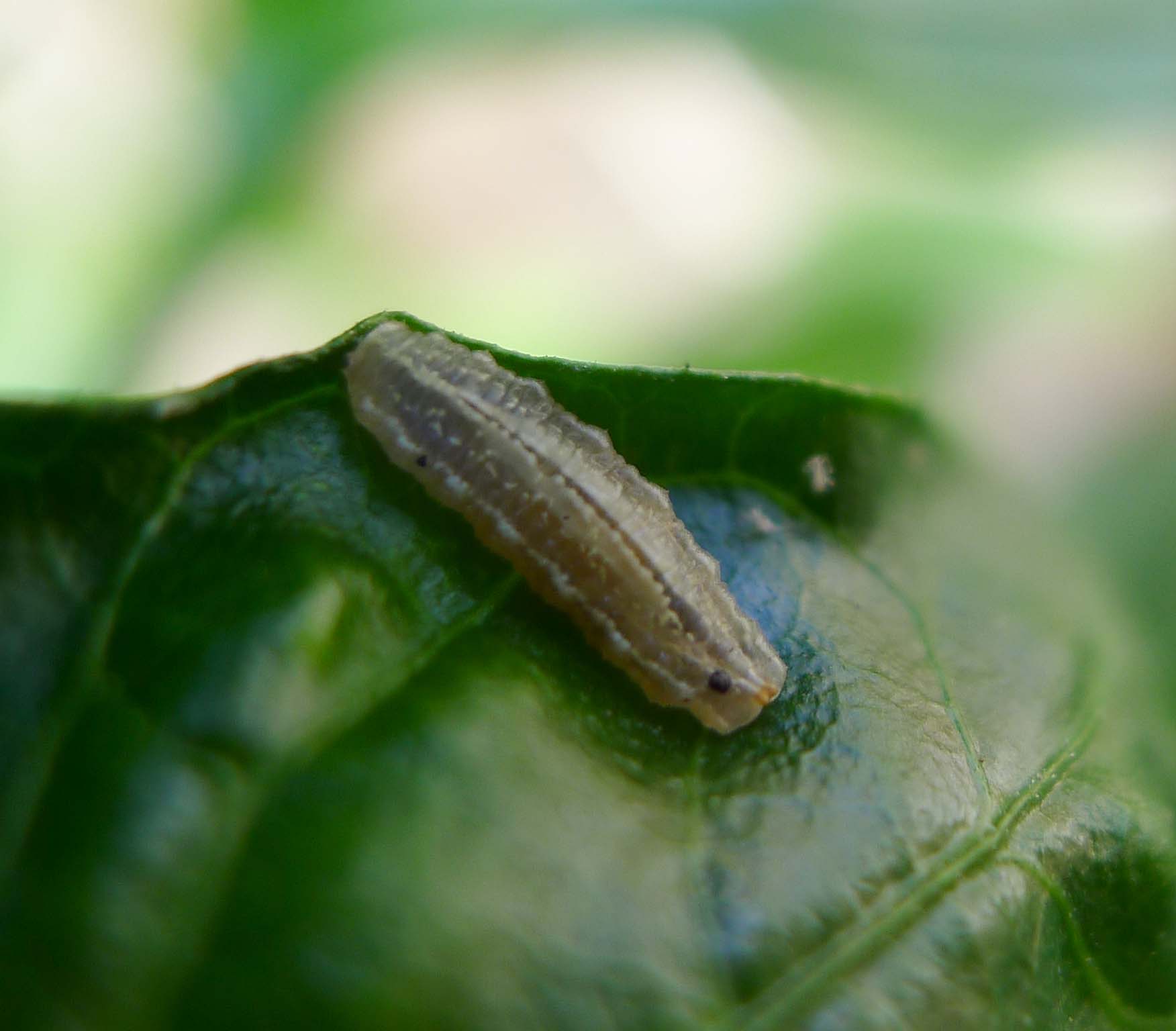
The battle between hoverfly larvae and aphids isn’t just about brute force – it’s a sophisticated biochemical warfare that involves complex chemical signals and defensive compounds. Aphids have evolved various chemical defenses, including alarm pheromones that warn other colony members of danger and waxy secretions that can deter some predators.
However, hoverfly larvae have developed countermeasures to these chemical defenses. They produce their own chemical compounds that can neutralize or overwhelm aphid defense systems. Some species even exploit aphid communication systems, using the aphids’ own chemical signals to locate new prey more efficiently.
The larvae’s digestive enzymes are particularly sophisticated, capable of breaking down aphid defensive compounds and even processing the complex sugars found in aphid honeydew. This biochemical versatility allows them to extract maximum nutrition from their prey while simultaneously disabling the aphids’ ability to mount effective defenses.
Environmental Factors That Supercharge the Hunt
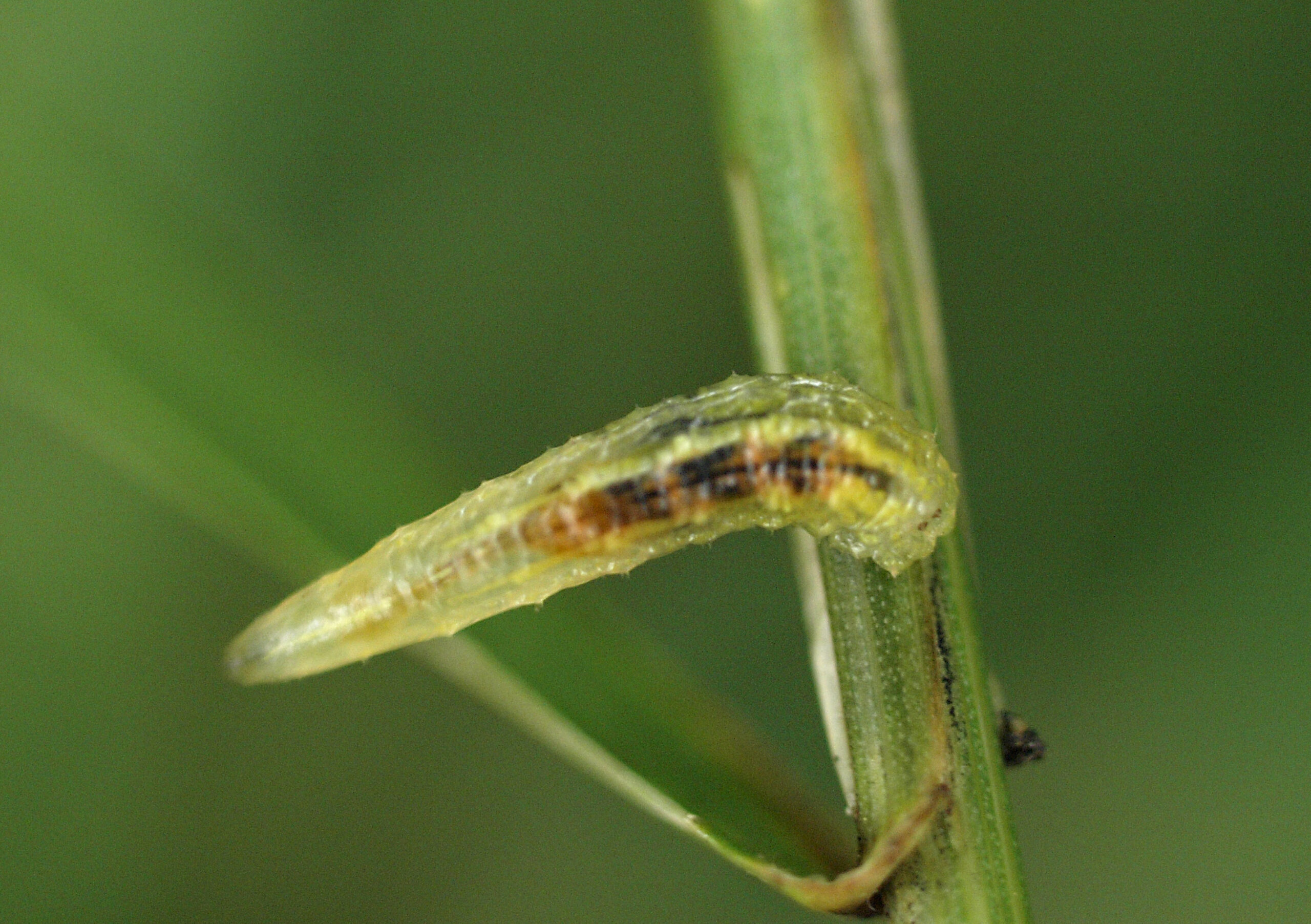
The effectiveness of hoverfly larvae as aphid predators is heavily influenced by environmental conditions, with temperature, humidity, and habitat complexity playing crucial roles in their success. Optimal temperatures between 20-25°C (68-77°F) create ideal conditions for both rapid larval development and maximum hunting efficiency.
Humidity levels also play a critical role, as hoverfly larvae are susceptible to desiccation in dry conditions. Gardens with adequate moisture retention, whether through mulching, companion planting, or irrigation, provide the ideal environment for these natural pest controllers to thrive. Conversely, extremely wet conditions can reduce larval mobility and hunting effectiveness.
The structural complexity of garden habitats significantly impacts hoverfly success rates. Gardens with diverse plant heights, dense foliage, and varied microclimates provide numerous hunting opportunities and shelter for developing larvae. Monoculture plantings, while easier to manage, often lack the habitat diversity that supports robust hoverfly populations.
The Pupation Process: Preparing for the Next Generation
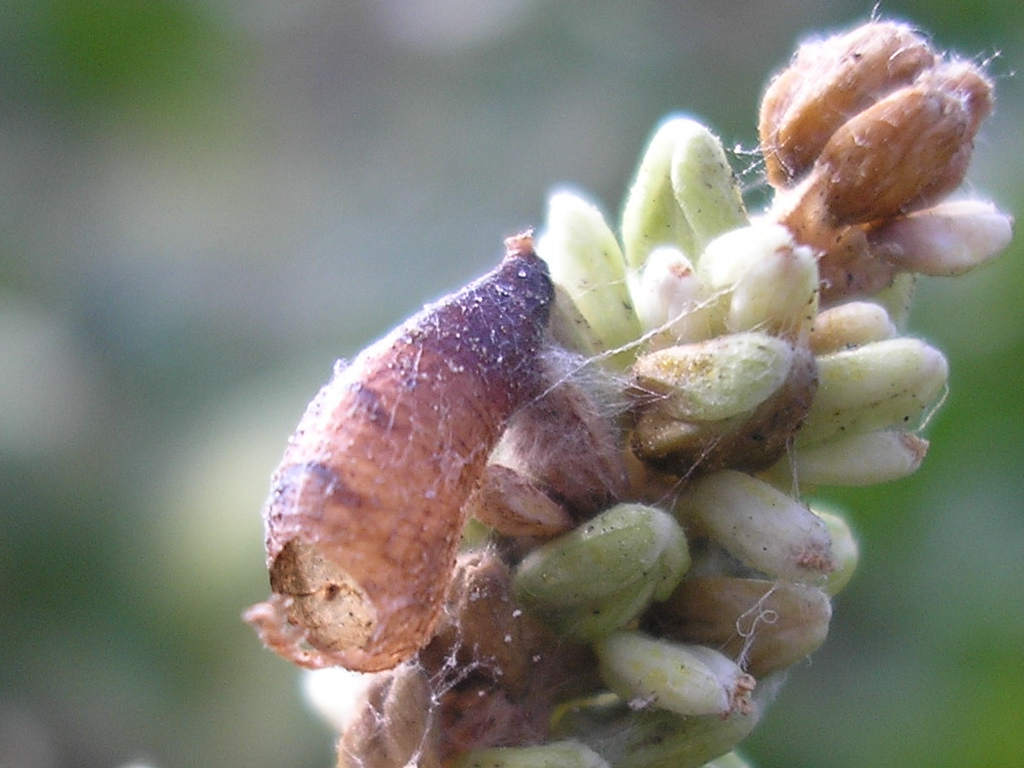
After completing their larval feeding frenzy, hoverfly larvae face one final challenge before becoming adults: the vulnerable pupation period. This transformation stage requires larvae to find secure locations where they can develop without becoming prey themselves. They typically pupate in soil, leaf litter, or hidden crevices within garden structures.
The pupation process takes approximately 1-2 weeks, during which the larva undergoes complete metamorphosis inside a protective pupal case. This barrel-shaped structure, called a puparium, is formed from the larva’s hardened final skin and provides protection from predators and environmental stresses.
Environmental conditions during pupation are critical for successful adult emergence. Consistent moisture levels, stable temperatures, and protection from extreme weather events all contribute to higher survival rates. Gardens that provide diverse microhabitats with natural shelter options support more successful pupation and stronger adult populations.
Adult Emergence: The Circle of Life Continues
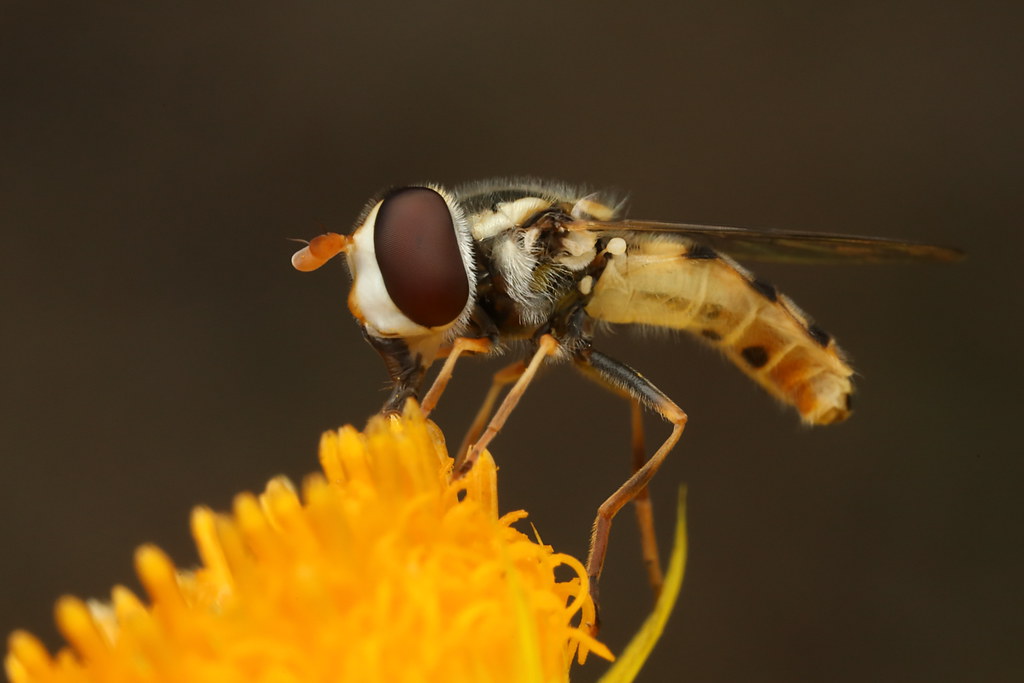
The emergence of adult hoverflies from their pupal cases marks the completion of one generation and the beginning of the next aphid-hunting cycle. Newly emerged adults are initially soft and vulnerable, requiring several hours for their exoskeleton to harden and their wings to fully expand. During this critical period, they seek shelter in protected locations within the garden.
Adult hoverflies have dramatically different dietary requirements than their predatory larvae. They feed primarily on nectar and pollen, making them valuable pollinators for garden plants. However, protein-rich pollen is essential for egg production in females, creating a direct link between garden flower diversity and hoverfly reproductive success.
The adult lifespan varies considerably depending on species and environmental conditions, ranging from two weeks to several months. Some species produce multiple generations per year, while others complete only one generation annually. This variation in life cycles helps ensure that hoverfly populations remain active throughout the growing season.
Seasonal Dynamics: Year-Round Pest Control
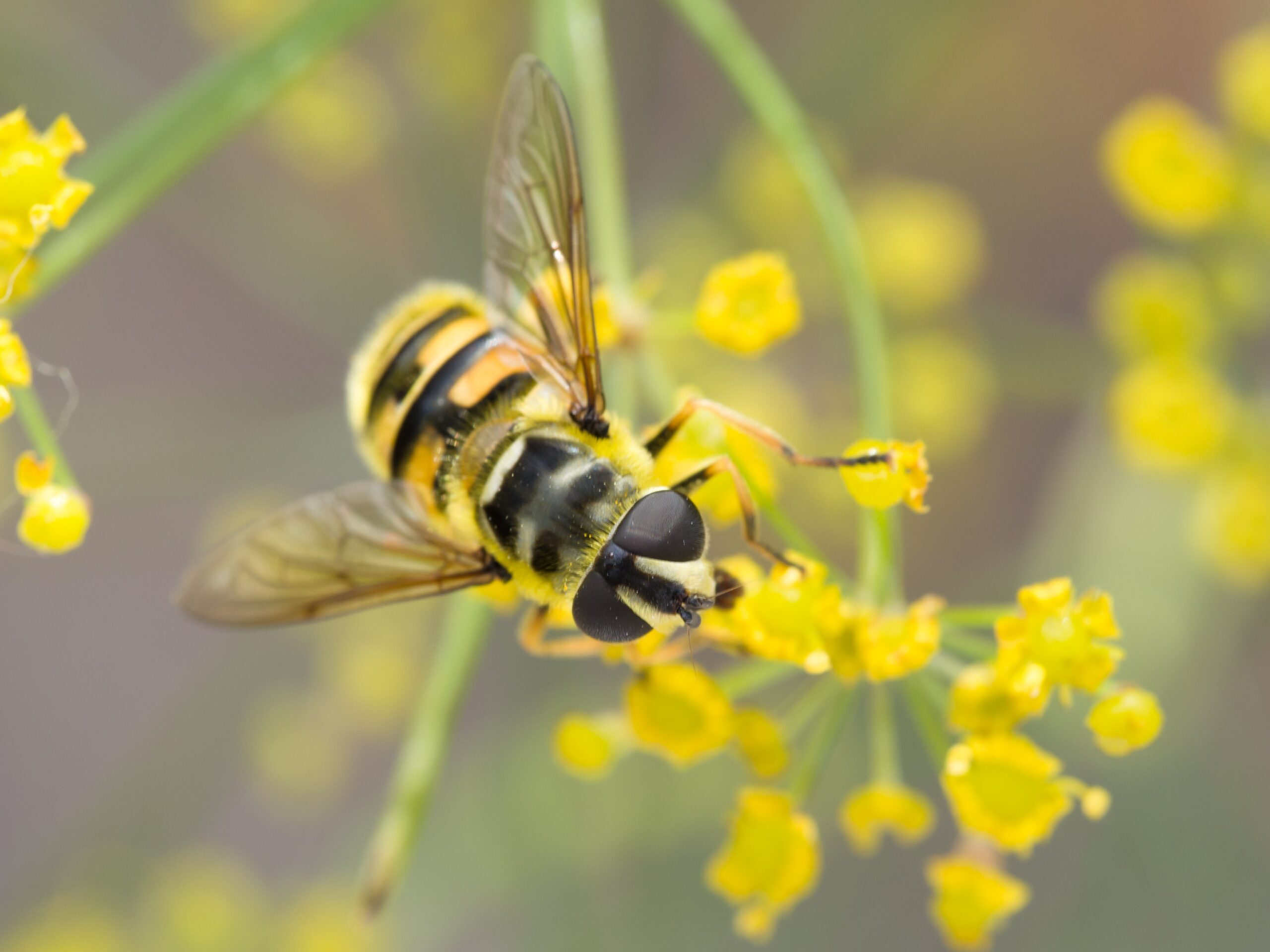
The seasonal activity patterns of hoverflies create a dynamic pest control system that adapts to changing garden conditions throughout the year. In temperate climates, hoverfly activity typically peaks during late spring and early summer when aphid populations are also at their highest. This natural synchronization ensures maximum impact when pest pressure is greatest.
Different hoverfly species become active at different times, creating overlapping generations that provide continuous aphid control throughout the growing season. Early spring species target the first aphid outbreaks, while late summer species help prevent population explosions that could overwinter and cause problems the following year.
Winter survival strategies vary among species, with some overwintering as adults in protected locations, others as pupae in soil, and some migrating to warmer regions. Understanding these seasonal patterns helps gardeners provide appropriate habitat and support for year-round hoverfly populations.
Maximizing Hoverfly Effectiveness in Your Garden
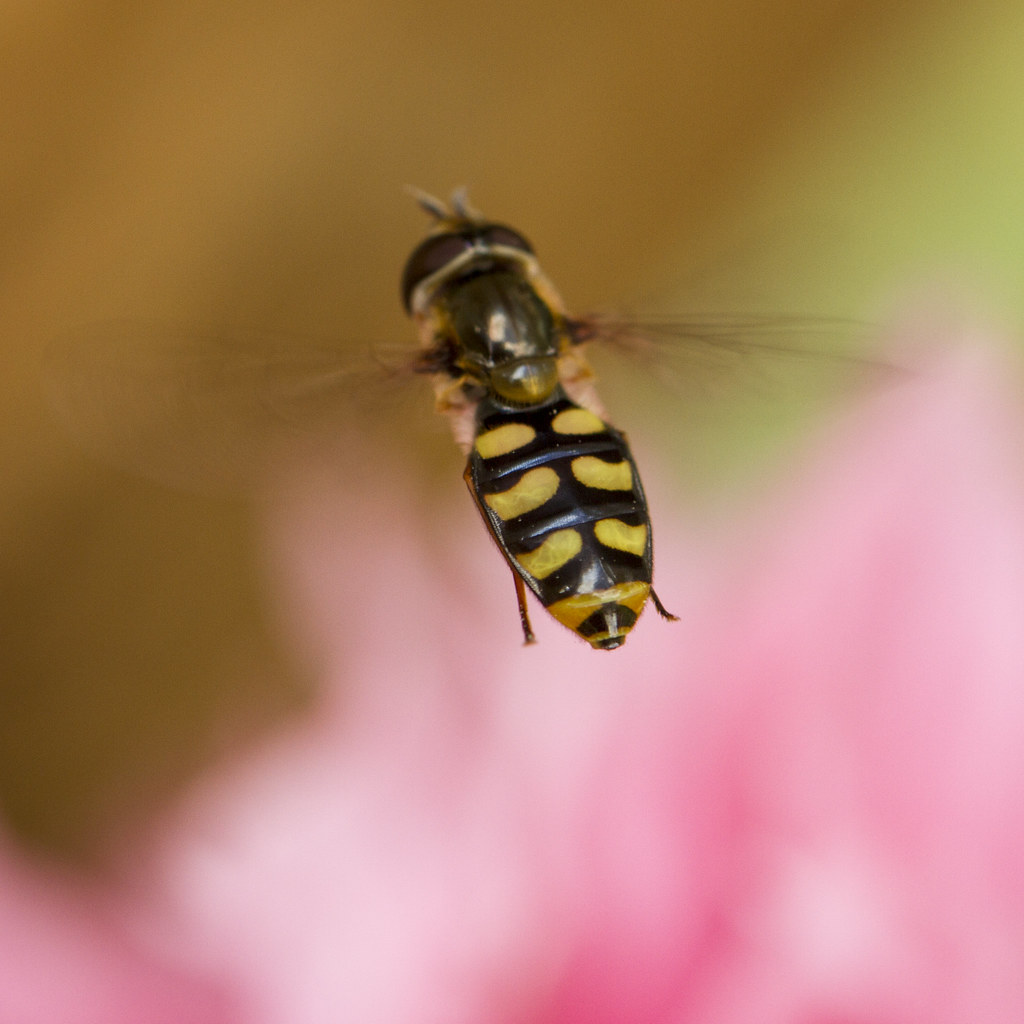
Creating an optimal environment for hoverfly populations requires a strategic approach that considers both adult and larval habitat requirements. The most effective gardens provide abundant nectar sources through diverse flowering plants that bloom throughout the growing season. Particularly attractive flowers include sweet alyssum, yarrow, fennel, and members of the carrot family.
Avoiding or minimizing pesticide use is crucial for maintaining healthy hoverfly populations. Even organic pesticides can harm beneficial insects, so targeted application methods and integrated pest management strategies work best. When chemical intervention is necessary, timing applications to avoid peak hoverfly activity periods reduces negative impacts.
Providing overwintering habitat through brush piles, leaf litter, and undisturbed soil areas helps ensure strong populations for the following growing season. These refugia serve as launching pads for spring aphid control and contribute to overall garden ecosystem stability.
The Broader Ecological Impact
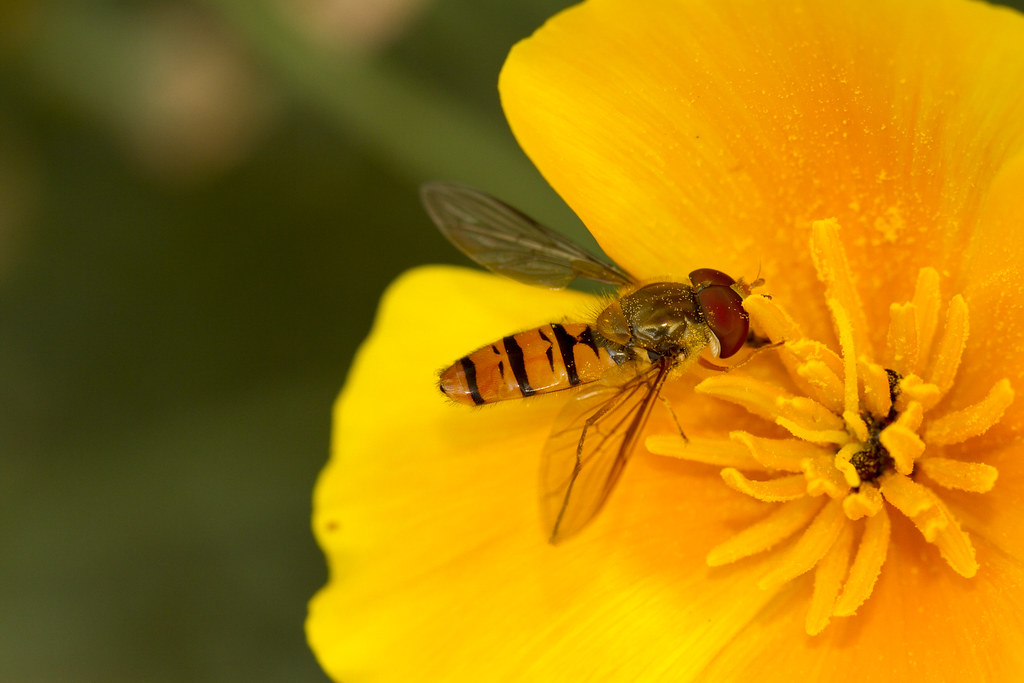
The relationship between hoverflies and aphids extends far beyond simple predator-prey dynamics, influencing entire garden ecosystems in ways that are both profound and subtle. Hoverfly larvae help maintain the delicate balance between pest populations and plant health, preventing the cascade effects that can occur when aphid populations explode unchecked.
By controlling aphid populations, hoverflies indirectly support the health of beneficial insects that might otherwise be displaced by aphid-farming ant colonies. This creates a positive feedback loop that enhances overall garden biodiversity and stability. Additionally, the dual role of adult hoverflies as both pollinators and parents of pest controllers makes them keystone species in garden ecosystems.
The presence of healthy hoverfly populations also serves as an indicator of overall garden ecosystem health. Their sensitivity to environmental changes and pesticide exposure makes them valuable early warning systems for potential problems that could affect other beneficial insects.
Conclusion

The remarkable relationship between hoverflies and aphids represents one of nature’s most elegant solutions to pest control, operating with a precision and efficiency that puts human pest management systems to shame. These tiny warriors work tirelessly in our gardens, their larvae consuming thousands of aphids while their adults pollinate our plants and add beauty to our outdoor spaces.
Understanding and supporting hoverfly populations isn’t just about controlling aphids – it’s about embracing a more sustainable, balanced approach to gardening that works with natural systems rather than against them. By creating hoverfly-friendly environments, we tap into millions of years of evolutionary refinement that has produced the ultimate biological pest control system.
The next time you see a small, hovering fly in your garden, take a moment to appreciate the incredible story unfolding before your eyes. That innocent-looking insect represents a lineage of specialized predators whose offspring are already planning their next aphid assassination mission. Who would have thought that something so small could be so devastatingly effective?

